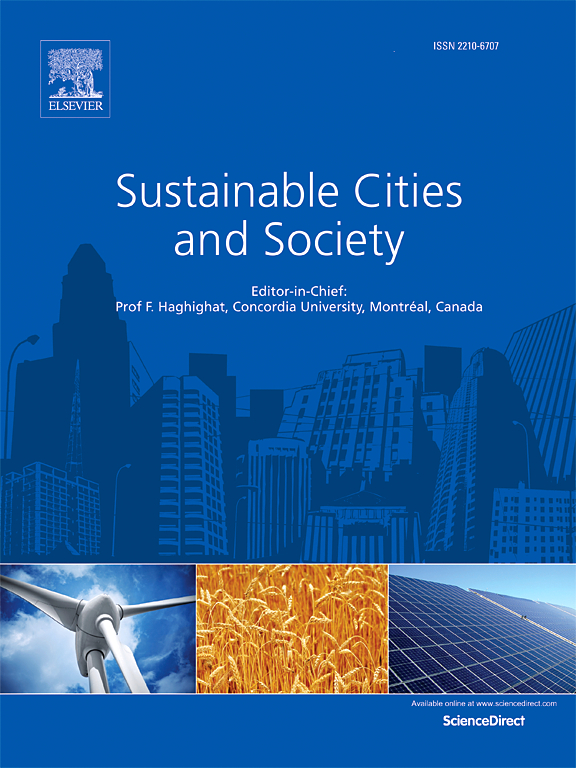Integrating morphology and vitality to quantify seasonal contributions of urban functional zones to thermal environment
IF 10.5
1区 工程技术
Q1 CONSTRUCTION & BUILDING TECHNOLOGY
引用次数: 0
Abstract
Rapid urbanization has significantly altered urban morphology and vitality, impacting the urban thermal environment. Previous studies have focused on morphology within urban functional zones, but the role of urban vitality remains underexplored. This study introduces a Morphology-Vitality-based Thermal Regulation (MVTR) framework that integrates point of interest, area of interest, and land use data to precisely delineate urban functional zones. Employing a random forest model, we analyzed the effects of two-dimensional (2D) and three-dimensional (3D) urban morphology and social, economic, and cultural vitality on the urban thermal environment across urban functional zones. The results show that: (1) Composite and comprehensive functional zones exhibit a more pronounced warming effect in spring and autumn compared to single functional zones, while this distinction is less evident in summer and winter. (2) 2D morphology indicators and cultural vitality have a stronger influence on LST compared to 3D morphology indicators and economic vitality during summer, but this influence weakens in winter. (3) Enhancing fractional vegetation cover in industrial and road zones and adjusting building heights in commercial areas effectively mitigate the urban heat island (UHI) effect year-round. This study enhances understanding of the UHI phenomenon and offers targeted urban planning strategies to address its seasonal impacts.
求助全文
约1分钟内获得全文
求助全文
来源期刊

Sustainable Cities and Society
Social Sciences-Geography, Planning and Development
CiteScore
22.00
自引率
13.70%
发文量
810
审稿时长
27 days
期刊介绍:
Sustainable Cities and Society (SCS) is an international journal that focuses on fundamental and applied research to promote environmentally sustainable and socially resilient cities. The journal welcomes cross-cutting, multi-disciplinary research in various areas, including:
1. Smart cities and resilient environments;
2. Alternative/clean energy sources, energy distribution, distributed energy generation, and energy demand reduction/management;
3. Monitoring and improving air quality in built environment and cities (e.g., healthy built environment and air quality management);
4. Energy efficient, low/zero carbon, and green buildings/communities;
5. Climate change mitigation and adaptation in urban environments;
6. Green infrastructure and BMPs;
7. Environmental Footprint accounting and management;
8. Urban agriculture and forestry;
9. ICT, smart grid and intelligent infrastructure;
10. Urban design/planning, regulations, legislation, certification, economics, and policy;
11. Social aspects, impacts and resiliency of cities;
12. Behavior monitoring, analysis and change within urban communities;
13. Health monitoring and improvement;
14. Nexus issues related to sustainable cities and societies;
15. Smart city governance;
16. Decision Support Systems for trade-off and uncertainty analysis for improved management of cities and society;
17. Big data, machine learning, and artificial intelligence applications and case studies;
18. Critical infrastructure protection, including security, privacy, forensics, and reliability issues of cyber-physical systems.
19. Water footprint reduction and urban water distribution, harvesting, treatment, reuse and management;
20. Waste reduction and recycling;
21. Wastewater collection, treatment and recycling;
22. Smart, clean and healthy transportation systems and infrastructure;
 求助内容:
求助内容: 应助结果提醒方式:
应助结果提醒方式:


